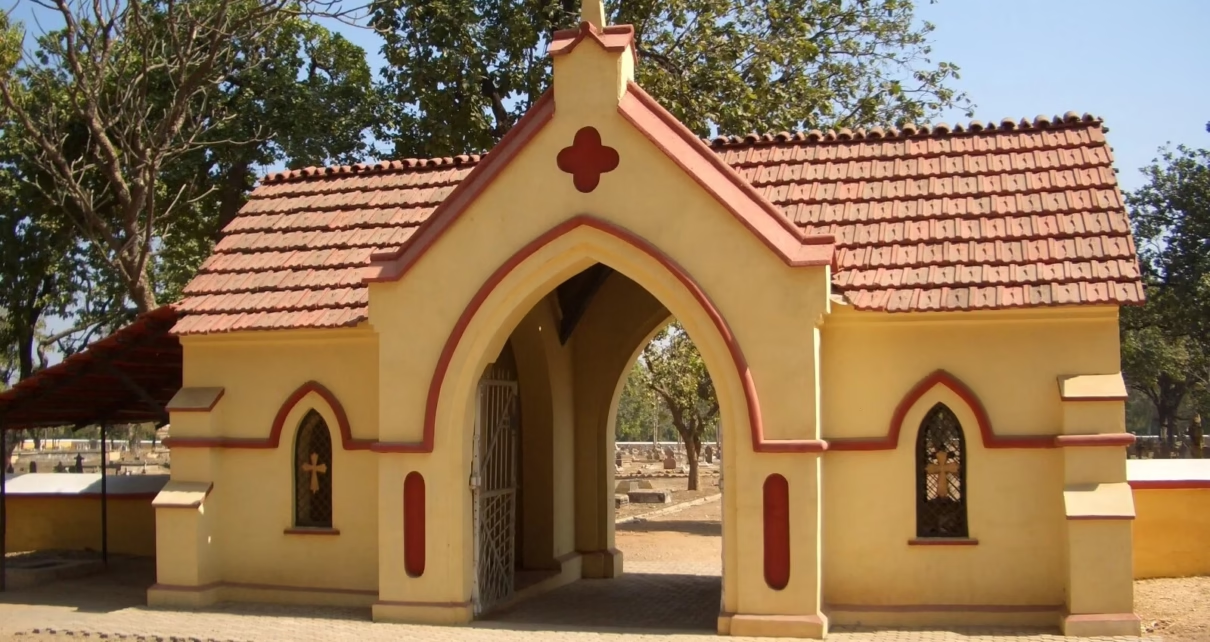Jhansi Cantonment Cemetery – A Forgotten Chronicle
Unveiling a Rare Document from the Untouched Pages of History
Jhansi – A Small City, Rich in Historical Legacy
Across India, the British Raj left behind countless cemeteries that serve as silent witnesses to temporary or permanent military and civilian settlements. One such significant yet lesser-known site is the Jhansi Cantonment Cemetery, located on the outskirts of the historic city of Jhansi in central India.
Though modest in size, Jhansi has always held a place of strategic and historical importance. It was not only a major British military base but also a vital railway junction — once home to the world’s longest railway platform.
Jhansi: The Land of Literature, War, and Sacrifice
It is believed that the city of Jhansi inspired author John Masters for his 1954 novel “Bhowani Junction”, which was later adapted into a movie in 1956.
Jhansi’s name is deeply etched in the annals of history, particularly due to the 1857 uprising and the valiant resistance led by Rani Lakshmibai. Post the uprising, British and Indian regiments expanded their presence in the region. During World War II, Jhansi became the training headquarters for a special forces unit known as The Chindits, who conducted long-range operations behind enemy lines in Burma.
Military Activities After the 1857 Rebellion
Following the martyrdom of Rani Lakshmibai, the British tightened military surveillance and established stronger structures in Jhansi.
Several British army units like the Royal Scots, Welch Regiment, and Bengal Lancers were stationed here.
The cemetery holds graves of numerous British soldiers who served during and after the 1857 revolt.
The Chindits and the WWII Connection
Between 1942-45, during WWII, Jhansi served as a major base for The Chindits – an elite British-Indian commando force led by Brigadier Orde Wingate.
Their training took place in the dense forests around Jhansi. Some of these soldiers never returned and now rest in the Jhansi Cantonment Cemetery.
Resting Place of Over 2900 Souls
Before India’s independence in 1947, over 2900 individuals were buried in the Jhansi Cantonment Cemetery.
Among them were Railway Engineers, Telegraph Officers, Missionaries, and Colonial Administrators.
Interestingly, the victims of the 1938 Air France crash, which occurred near Jhansi, are also buried here.
Some prisoners from the Boer War (1899–1902), brought to India by the British, died in Jhansi and were laid to rest in this cemetery.
Beyond Soldiers: Families, Children, and Epidemic Victims
The cemetery does not only contain soldiers but also:
-
Wives and children of British soldiers who succumbed to India’s harsh climate, diseases (like malaria, cholera), and wartime adversities.
-
Victims of major epidemics during the 19th century, such as typhoid and plague, making the site valuable for epidemiological and public health research.
Massacres of 1857 and the Silent Stones
Many British civilians and soldiers killed during the Jhansi Massacre in the 1857 uprising are buried here. When Indian sepoys revolted against the British fort and cantonment, hundreds of British men, women, and children were killed.
Their graves, still standing today, silently bear witness to that turbulent chapter of history.
Some epitaphs include the names of children and pregnant women, who had no military ties but fell victim to the violence of the time.
Thus, this cemetery is more than a burial ground – it is a symbolic intersection of colonial conflict and resistance, of imperial loss and Indian resilience.
Restoration and Challenges of Preservation: CWGC’s Role
For decades, the cemetery remained neglected, overgrown with weeds and lost to time. Around 2005, an elderly local woman named Peggy Cantem took the initiative to raise awareness about its state.
British engineer Chris Davey later joined her efforts, and in 2016, the Commonwealth War Graves Commission (CWGC) restored several deteriorating graves.
The British Association for Cemeteries in South Asia (BACSA) also revived interest in the site through their documentation.
Between 2005-2010, major initial restoration included:
-
Repairs to walls and pathways
-
Clearing of overgrowth
-
Digitalization of old burial registers
CWGC replaced many headstones with standardized markers, though this resulted in the loss of some emotional epitaphs — fortunately preserved in BACSA’s archives.
A Living Archive of Colonial and Indian History
The Jhansi Cantonment Cemetery is not just a graveyard — it is a historical archive, chronicling a forgotten chapter of India-Britain relations.
It gives names and resting places to those forgotten lives who spent a part of their journey in India and found their final peace here.
📲 Stay Connected With Us – Because Every Story Deserves to Be Told
If you seek accurate, unbiased, and off-the-beaten-path reporting, connect with TV10 Network today.
We bring you stories that often go unheard — grassroots truths, told your way.
🔹 👍 Like us on Facebook
🔹 🐦 Follow us on Twitter (X)
🔹 📸 Join us on Instagram
🔹 ▶️ Subscribe on YouTube
👉 Your Like, Follow, or Subscribe gives us strength — Thank you!
⚠️ Disclaimer
This article is based on historical documents, archival records, research papers, books, and information provided by relevant institutions. While every detail has been presented with careful research, we do not guarantee complete accuracy or updates of the mentioned facts. The content is intended for informational purposes only, and readers are advised to use their discretion.
This article is not meant to hurt the sentiments of any community, nation, or individual. If you have suggestions, corrections, or feedback regarding the content, please write to us at info@tvtennetwork.com or WhatsApp at 7068666140.
We value your contributions and suggestions.





